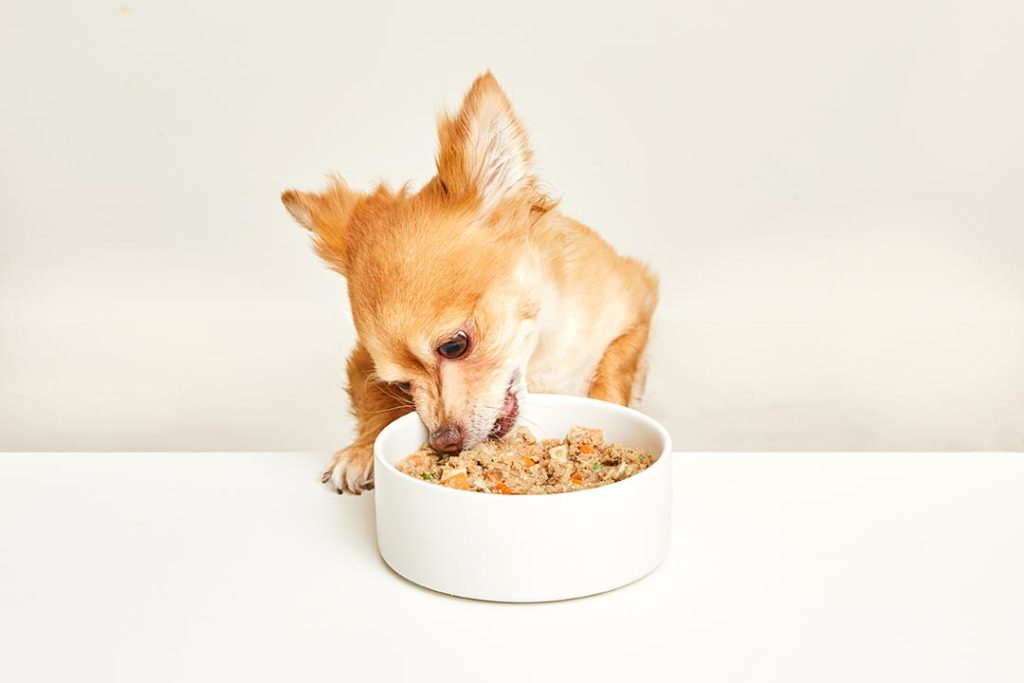Proper nutrition is vital for your pup’s health. As a devoted pet parent, you want to provide the best possible balanced diet for your canine friend. With so many dog food options on the market, choosing the best one can be overwhelming.
“Complete and balanced diet” is a phrase that is often seen on dog food labels, but what does it mean? Understanding this key statement can help ensure your four-legged friend receives the nutrients they need to live their best life.
“Complete and balanced” explained
Labeling a dog food “complete and balanced” means that the diet contains all the essential nutrients a dog needs in the correct amounts to support their overall health. The Association of American Feed Control Officials (AAFCO), which sets nutritional standards for U.S. pet foods, regulates this designation.
A dog food is “complete and balanced,” if it meets or exceeds the minimum requirements for proteins, fats, carbohydrates, vitamins, and minerals necessary for a dog’s life stage. This means a dog food labeled “complete and balanced,” for their life stage (e.g. puppy, adult, or senior), supplies all the nutrients they need. Your pup should not need additional supplements unless prescribed by your veterinarian.

Key nutrients in a complete and balanced diet

A complete and balanced dog food contains six essential nutrients that your pup needs to stay happy and healthy.
- Protein — Protein plays an important role in muscle development, tissue repair, immune function and overall body function. Protein sources include beef, chicken, fish, eggs, and plant-based proteins, such as peas and lentils.
- Fats — Fats are a concentrated energy source. They support healthy skin and coat, help the absorption of fat-soluble vitamins (i.e., A, D, E, and K), and assist brain and cell function. Essential fatty acids, such as omega-3 and omega-6 fatty acids, are especially important in reducing inflammation, maintaining joint health, and supporting cognitive health. High-quality sources of fat for a dog’s diet include algae oil, fish oil, fresh, unprocessed animal fats, and flaxseed.
- Carbohydrates — Carbohydrates, such as certain starches, are a useful energy source, especially for active or working dogs who require sustained energy. They also provide fiber, which helps with digestion by promoting regular bowel movements and supporting healthy gut microbes. Sources include rice and oats, as well as grain-free options such as sweet potatoes, peas, and legumes.
- Vitamins — Vitamins are vital for numerous bodily functions such as immune health, metabolism, vision, and cell growth (more on that below).
- Minerals — Minerals, such as calcium, phosphorus, zinc, potassium, magnesium, and iron support bone health, nerve function, muscle contraction, enzyme activity, red blood cell production, and overall metabolic processes. Key sources include meat, fish, eggs, dairy products, leafy greens, legumes, and whole grains.
- Water — Fresh water is the most essential nutrient, necessary for hydration, digestion, circulation, temperature regulation, and overall health.
Vitamins
Key essential vitamins include:
- Vitamin A — Vitamin A supports a dog’s growth, vision, immune system, and skin health. Dogs get Vitamin A from animal and plant-based sources. Liver, eggs, fish oils, and dairy products are rich in preformed Vitamin A. Vegetables, such as carrots, sweet potatoes, and spinach provide carotenoids convert to Vitamin A by the dog’s body.
- B vitamins — B vitamins play numerous critical roles in supporting a dog’s health. These essential nutrients support energy metabolism, digestion, brain function, red blood cell production, hormone production, cell growth, and immune health. Sources include liver, eggs, fish, poultry, beef, leafy greens, whole grains, and legumes. B vitamins aren’t water-soluble and can’t be stored by the body in large amounts. This means dogs need a consistent dietary supply to stay healthy.
- Vitamin D — Vitamin D helps regulate calcium and phosphorus to support bone health and muscle function. Humans can make vitamin D from sunlight, but dogs rely on their diet to get an adequate amount. Common sources include salmon, sardines, liver, and eggs.
- Vitamin E — Vitamin E is a powerful antioxidant that protects cells from oxidative damage caused by free radicals. It is necessary for immune system function, skin and coat health, muscle development, and heart health. Dogs get vitamin E from sources such as fish, eggs, poultry, sunflower seeds, spinach, sweet potatoes, and vegetable oils (e.g., safflower and wheat germ oil).
- Vitamin K — Vitamin K plays a crucial role in blood clotting, helping to prevent excessive bleeding. It also supports bone and heart health. Sources include leafy green vegetables (e.g., spinach, kale, and broccoli), liver, fish, eggs, and some dairy products.
Earning a complete and balanced label

According to the AAFCO, “complete” means a dog food contains all the nutrients required. “Balanced” means the nutrients are present in the correct amounts.
To meet these requirements, the food must be formulated to meet the specified nutrient profile based on laboratory analysis.
In addition, some companies test dog food in an AAFCO-approved feeding trial. This is a controlled study where dogs are fed the diet for a set time, during which their health and nutrient levels are monitored to ensure the food supports their health and well-being.
Dog foods that meet the AAFCO’s “complete and balanced” specifications bear a nutritional adequacy statement. You can typically find it on the back or sides of the kibble bag or package in small print. Formats to look for include:
- “(Product name) is formulated to meet the nutritional levels established by the AAFCO Dog Food Nutrient Profiles for (life stage).”
- “Animal feeding tests using AAFCO procedures substantiate that (Product name) provides complete and balanced nutrition for (life stage).”
- “(Product name) provides complete and balanced nutrition for (life stage) and is comparable to a product which has been substantiated using AAFCO feeding tests.”
Complete and balanced for different life stages

Dogs at different ages have different nutritional needs, which is why companies must label foods for the appropriate life stage. Diets for different life stages include:
- Puppy food — Puppies grow rapidly, and they have higher nutritional demands than adult dogs. Puppy food contains higher levels of protein, fat, and other nutrients to support growth and development. Feeding an adult dog food to a puppy can cause nutrient deficiencies or improper growth, potentially leading to long-term health issues.
- Adult dog food — Once a dog reaches about 1 year of age, their nutritional requirements decrease. Adult dog food is formulated to ensure a healthy nutrient balance without providing excessive calories. This helps your dog maintain a healthy weight to prevent obesity.
- Senior dog food — Older dogs typically experience a decrease in metabolic rate and have evolving health needs. Senior dog food is often lower in calories and may contain joint-supporting nutrients and increased fiber for improved digestion.
Some dog foods are labeled for “all life stages,” but you should check with your veterinarian to see if these foods are ideal for your dog.
What about homemade or raw food?

Some pet owners choose homemade or raw diets over commercial dog food. However, these foods may not meet AAFCO’s complete and balanced standard.
If not carefully formulated, homemade diets can lack essential nutrients. If you decide to prepare your dog’s food at home, it’s crucial to consult with a veterinary nutritionist to ensure proper nutrient balance.
Raw diets can also be nutritionally imbalanced and may also pose a risk of bacterial contamination. Pet parents interested in feeding their pup raw food should work closely with a veterinary nutritionist to ensure their four-legged friend receives a safe and nutritionally complete meal plan.
Choosing the best complete and balanced dog food

Your veterinarian is the best source to help you determine the right diet for your four-legged family member. They will consider your dog’s specific life stage and individual needs regarding health to recommend the best diet. Considerations include:
- Ensuring the food has an AAFCO statement deeming it “complete and balanced” for your dog’s life stage
- Reviewing the ingredient list for high-quality proteins, healthy fats, and easily digestible carbohydrates
- Considering your dog’s age, breed, size, activity level, and health condition
Ensure you meet your dog’s nutrition needs by feeding a complete and balanced diet. If you are looking for a fresh whole food option for your pup, try JustFoodForDogs. Our diets exceed AAFCO standards and are also balanced to National Research Council (NRC) standards.
By Jenny Alonge, DVM, FFCP
